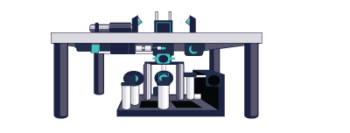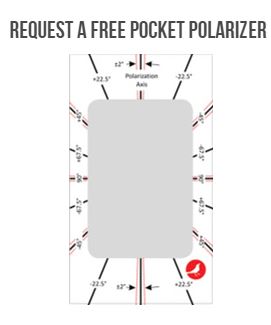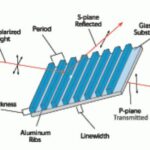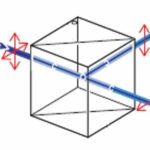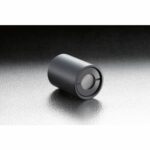When choosing a polariser it is normally a balance of several key considerations: cost, wavelength range, aperture size, acceptance angle, damage threshold, transmission efficiency, and extinction ratio.
For more information please read the section Polariser Selection “Guide” in our blog Polarisation & phase manipulation with retarders (waveplates)
Polarisers come in three main forms: Linear; Beam-splitting and Circular.
Linear Polarisers
Ideal linear polarisers transmit 100% of the light when the incoming light is polarised and aligned with the polarisation axis or 50% if the incoming light is unpolarised.
The ratio between the transmission of the desired polarisation direction and the undesired orthogonal polarisation direction is the contrast or extinction ratio.
Beamsplitting Polarisers
Beamsplitting polarisers separate the incoming unpolarised light into two (usually) orthogonally polarised beams. Most commonly this is done via birefringent crystals such as Calcite via beam splitting cubes or polarising prisms.
Other beamsplitters such as wire grid polarisers contructed of a thin layer of aluminium microwires allow for durability, contrast and a wide field of view through to IR wavelengths.
Laser 2000 offer laser line and broadband beamsplitters.
Circular Polarisers
Mainly used for optical isolation with two main designs:
1) Dichroic circular polarisers/zero-order retarder
2) Beamsplitting polariser/zero-order retarder
Both designs take advantage of the handedness change of a circularly polarised beam upon reflection. By changing the handedness of the circularly polarised beam, back reflections are blocked by the polariser.











